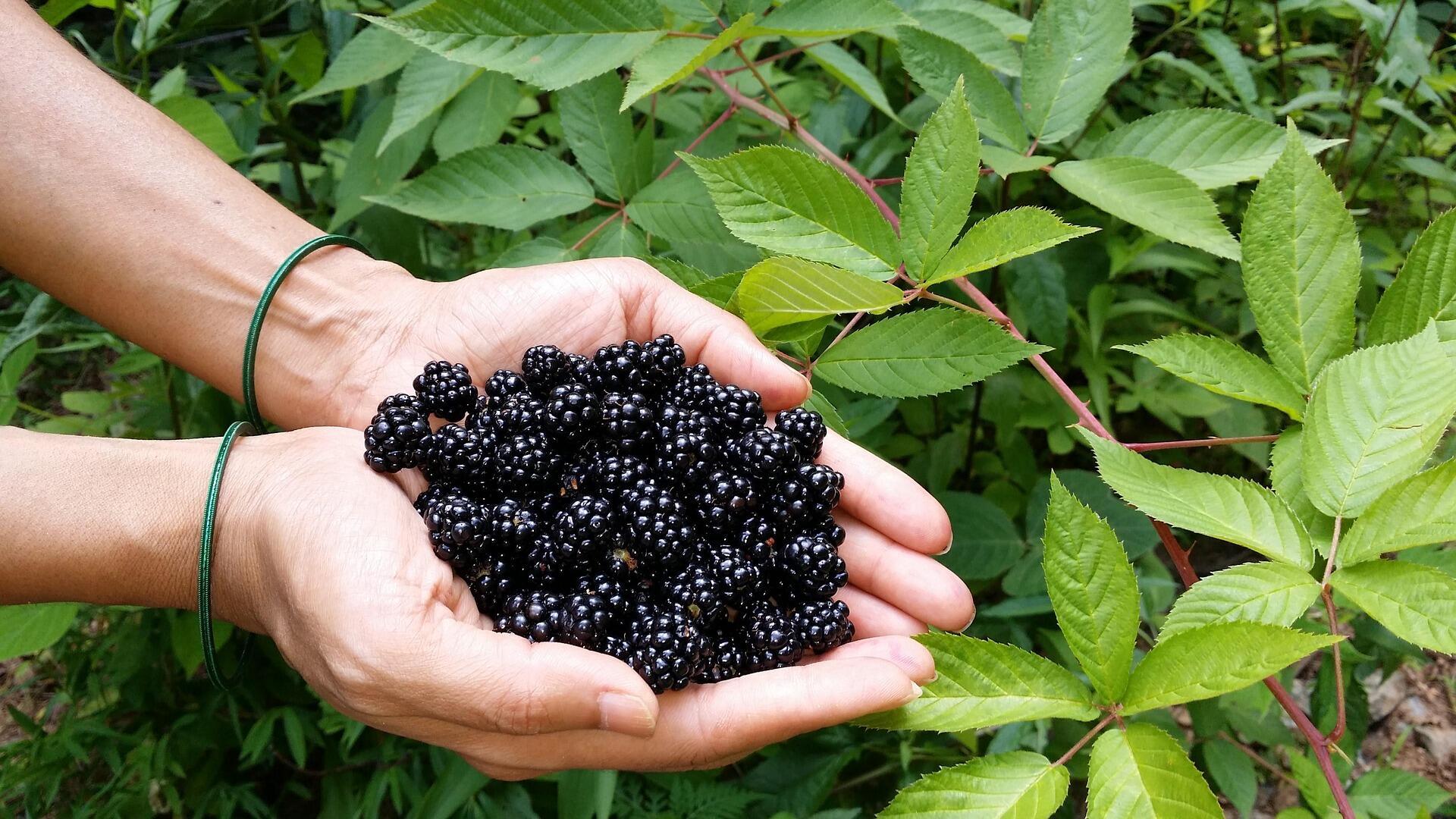Chances are, if you are thinking of purchasing fruit trees or fruit-bearing plants for the first time, you’ve already done some research. Here, we make it convenient for you in one brochure!
Where to start? Begin with…
Step 1: Comprise a wish list of plants.
Step 2: Experiment – Try something new!
Step 3: Know your land and location – Sunlight, space, and soil conditions.
Step 4: Growing methods – Raised beds, traditional rows, or containers?
Step 5: Choose your fruit – Start with trees, then berries and vegetables.
There’s nothing more scrumptious than eating berries harvested from your own crop, and your success begins with the planting site and method you use.
When you purchase your plants from Herbein’s Garden Center, they should already be acclimated to our outdoor conditions & temperatures. If, however, you mail-order a plant, be sure to place them in a sheltered, shady area and gradually increase its time outdoors by 1-2 hours a day. After about 7 days, your plants should be ready to transplant into the ground.
BEFORE planting, consider these 3 things when planning your home orchard:
- Cross-pollination
- Sun and soil
- Space for future plants
Cross-pollination is not necessary for blackberries.
Plant in full sun (at least 6-8 hours) and well-draining fertile soil. If you have heavy soil, add amendments such as manure or peat moss (up to 1/3 concentration) into your pile of topsoil.
Think ahead to the possibility of expanding your orchard in the future and have the space picked out ahead.
Check your soils pH before you plan on digging. You can purchase a Penn State Soil Test Kit from us or a meter for a quick result. Blackberries need a soil pH between 5.8–6.8. Do NOT plant in soils that are extremely heavy.
Use Espoma Organic Garden Lime if the soil’s pH is too low, or Espoma Organic Soil Acidifier if the soil’s pH is too high.
As you prepare your planting site, remember that blackberries should be planted 3’ apart with 8’ between each row.
Do NOT plant Red, Gold or Purple raspberries and blackberries closer than 75-100’ to BLACK raspberries. Black raspberries are susceptible to viral diseases carried by aphids from nearby plants.
Planting Tips
- Fill the hole with moist topsoil (amended if necessary), then tamp down with your hands to remove air pockets.
- Water thoroughly with a deep, slow soaking. If the soil settles, add more soil until it is ground level again.
- Pruning your blackberry plant is usually not necessary at the time of planting.
- Do not add fertilizer to the hole with blackberry plants. Use AFTER the plant starts to green up and begins to grow in spring, and again just after harvest. Fertilize lightly the first time and not directly on the plant.
Fertilizer we recommend for use with blackberry plants: Espoma Holly-tone
Amending/Preparing Your Soil
- Roots will grow faster if they’re spread out. Dig your hole deep and wide enough so the root system has enough room to expand. If the soil needs loosened up, mix dehydrated cow manure, peat moss or compost (up to 1/3 concentration) into the pile of soil you dig from the hole. Coco-Coir also works well if mixed into the top 2” of existing soil.
Adding organic matter will improve just about any type of soil condition by helping retain moisture and nutrients and break apart clay soils so that water can penetrate through and roots can spread.
Pests & Disease Control
Every plant has the potential for insect and disease damage. Big factors like location and weather will play a role in which issues your plants will encounter. Practicing proper maintenance on your fruit & berry plants such as watering, pruning, spraying, weeding, and cleanup will help keep most issues at bay.
Below is a list of pests that have been known to make an appearance on blackberry plants.
Aphids Leafroller
Cane Borer Mites
Fruitworm Rose Chafer
Japanese Beetle Thrips
Below is a list of diseases known to infect blackberry plants.
Cane Blight Mosiac
Crown Gall Orange Rust
Fruit Rot Powdery Mildew
Leaf Curl Spot Anthracnose
Grab our brochure “Pest & Disease Control for Edibles” for more in-depth info.
Pruning Blackberry Plants
Pruning is a critical part of plant care and doesn’t have to be as overwhelming as most gardeners think.
- Cut back near the ground after the plant has produced fruit.
- Minor pruning can be done every spring to keep the branches from crossing and becoming tangled. This promotes fruit growth. Prune trailing blackberries main canes to 3-4’. Then cut side branches to about 12”, leaving half a dozen buds on each. Other varieties should be cut back to 3-4’ in midsummer, forcing lateral branches to grow from buds below this point. Later in the fall, cut back lateral branches to 16-18”. Fruit will grow from these branches the following year, after which the canes should be removed to make room for the next season’s growth.
Spraying Blackberry Plants
Spraying is important for handling potential pests and diseases.
Natural Prevention Control
- Serenade® Garden Disease Control for anthracnose, powdery mildew, rust and more.
What to Spray – At the first sign of:
- Bonide® Captain Jack’s™ Deadbug Brew for fruitworms, thrips, leafrollers, and more.
- Bonide® Citrus, Fruit & Nut Orchard Spray for aphids, mites, blight, thrips, powdery mildew, rust and more.
- Bonide® Thuricide Bacillus Thuringiensis (BT) for omnivorus leafroller.
- GardenTech® Sevin Concentrate Bug Killer for aphids, fruitworms, Japanese beetles, mites, rose chafer, leafrollers and more.
- Bayer Advanced™ Complete Insect Killer for aphids, mites, leafrollers, fruitworms, Japanese beetles, rose chafer and more.
Watering
Unless you typically need to water your plants for “normal” plant growth, you probably won’t need to water after the first growing season. However, don’t forget to water directly after planting at your site.
Harvesting
When to Harvest
Are you anxious for your first crop of delicious berries? Harvesting time can be enjoyed by the entire family and gives you the greatest satisfaction of reaping the fruits of your labor.
- You can expect your first crop in the 2nd To get the best flavor and texture from your blackberries, harvest them when it is dry and cool. The berries should be plump and have a dark coloring. Gently grab and twist the berry, it should release easily when it is ripe. Don’t stack them too deep in your basket or you’ll squash them.
- Harvest every 2-3 days to avoid over ripening or rotting. Blackberries only last 4-5 days in the refrigerator after they are picked.
- Do not wash your berries after harvesting, only when you are ready to eat. Washing them makes them prone to spoiling early.
- Refrigerate or freeze any berries you have left.
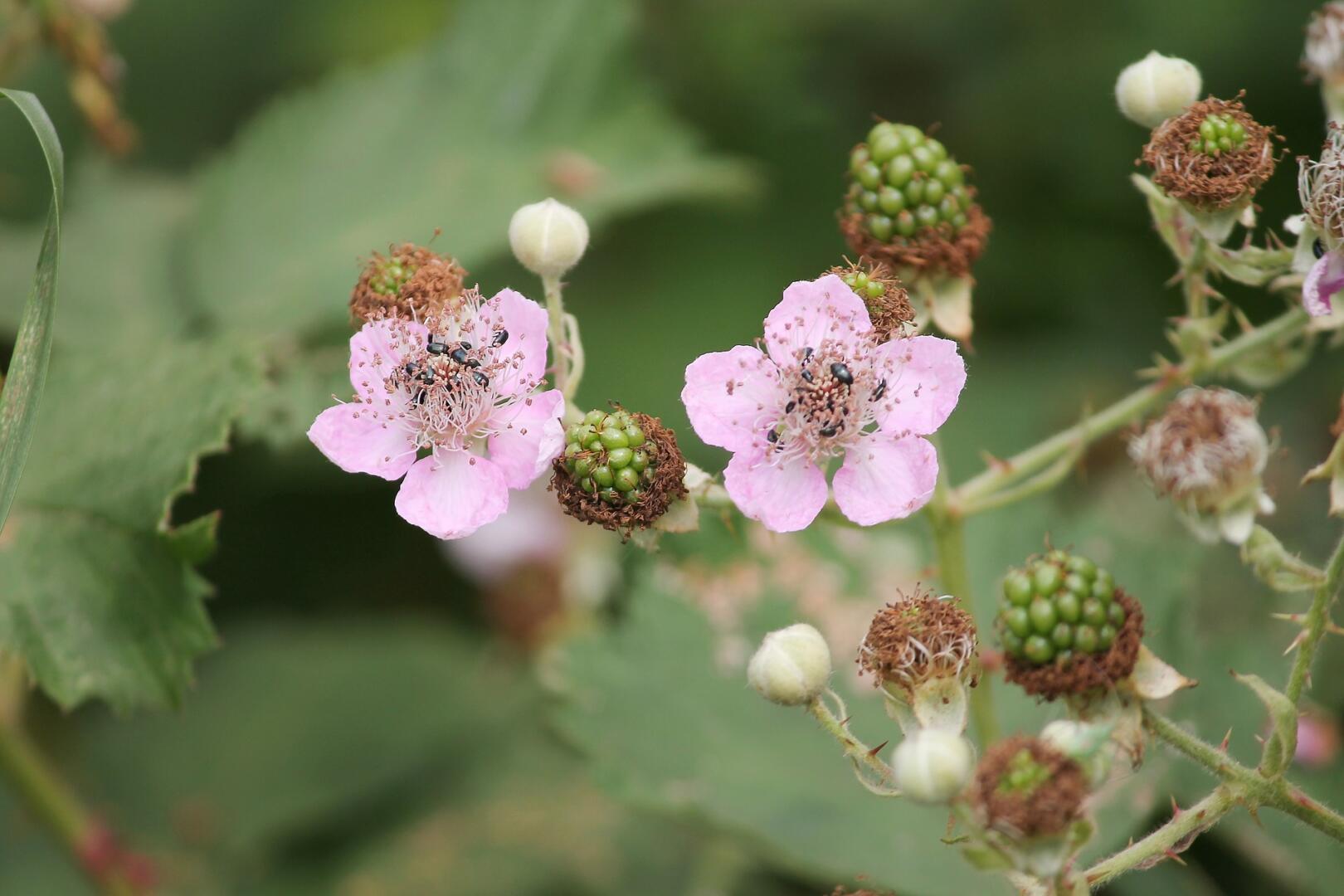
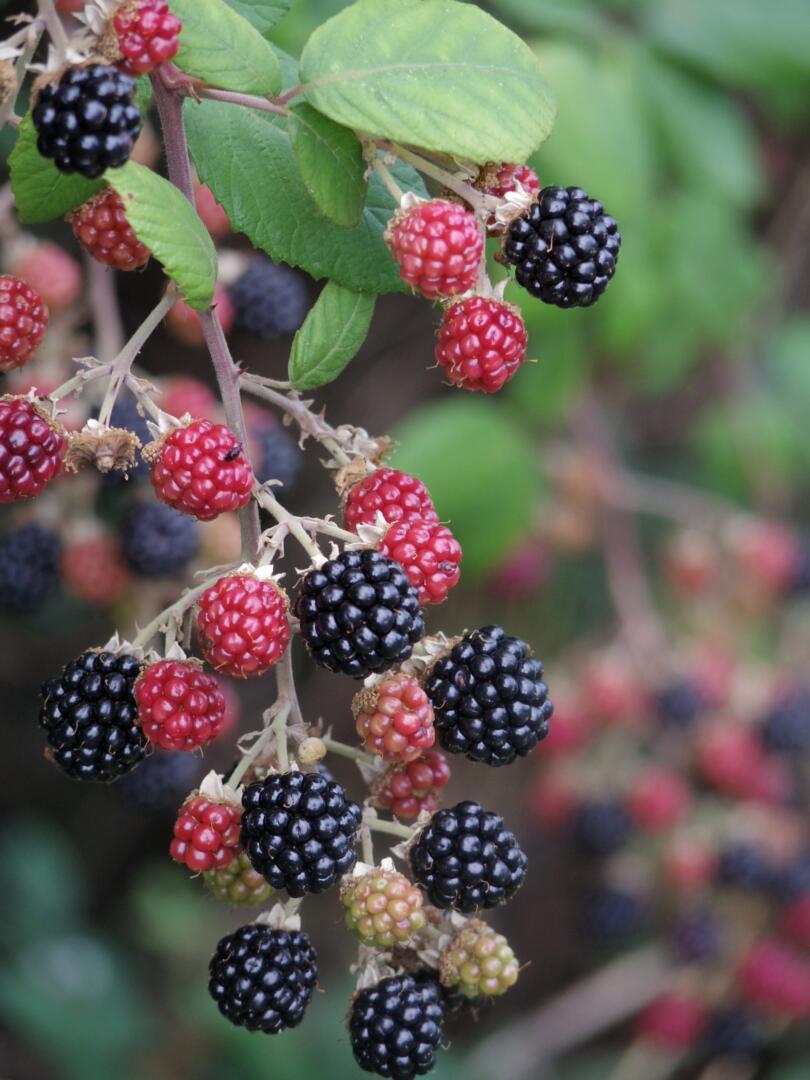
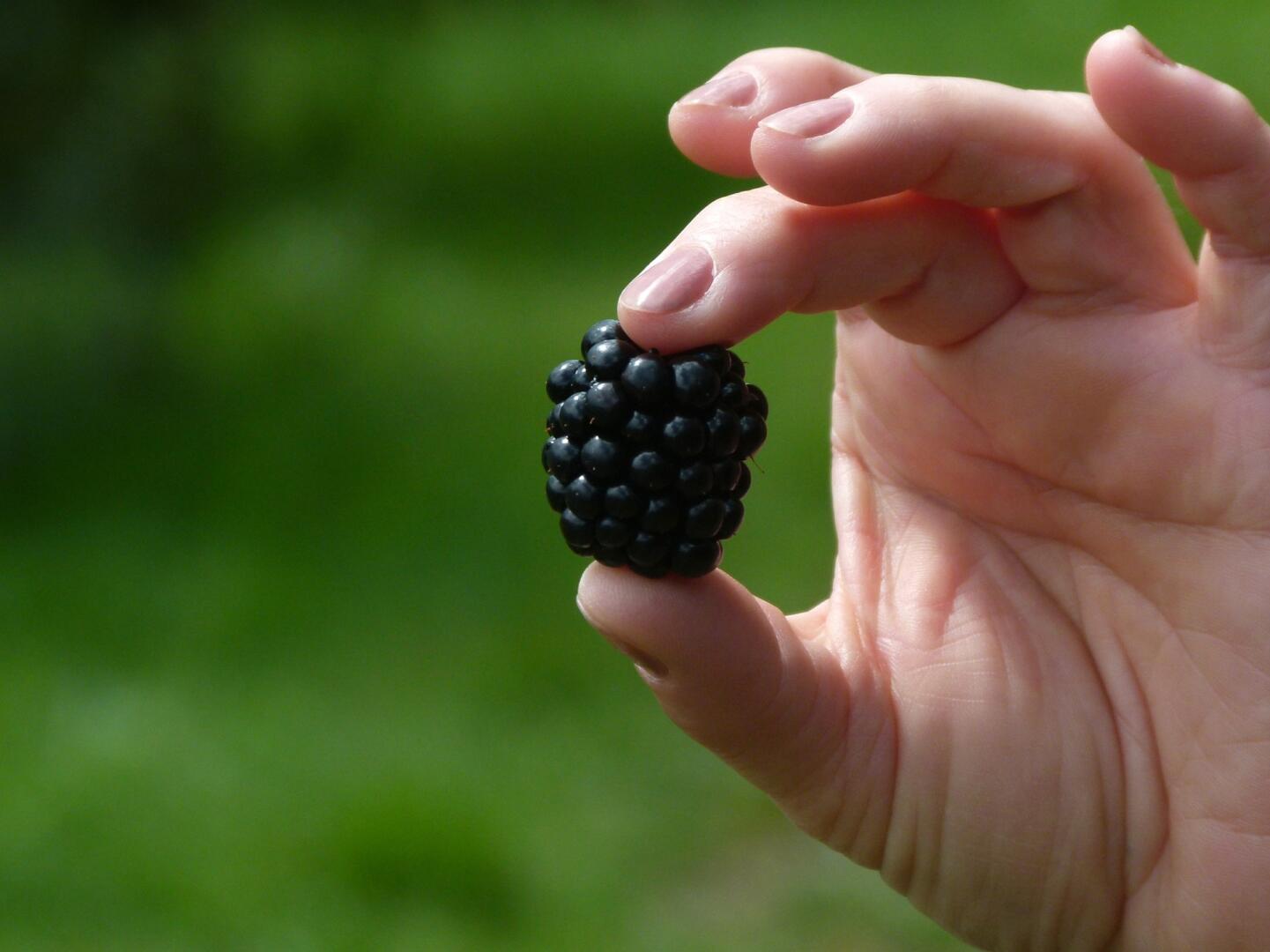
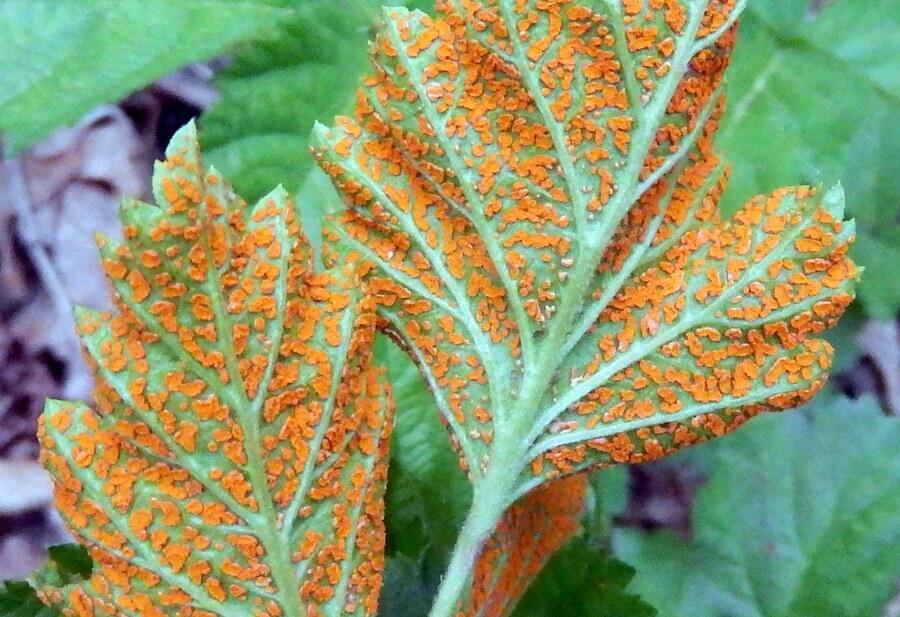
Photo credit: Penn State Extension
Orange Rust
The most apparent and familiar stage of the disease cycle. At this stage much of the leaf underside is covered with orange pustules and abundant spores are being released.
